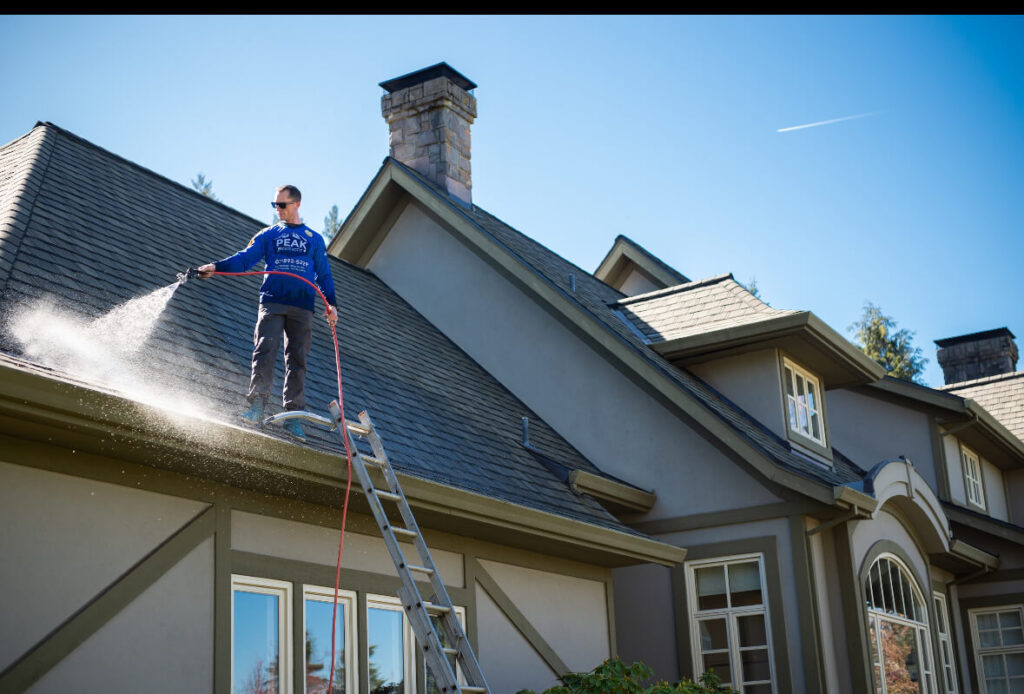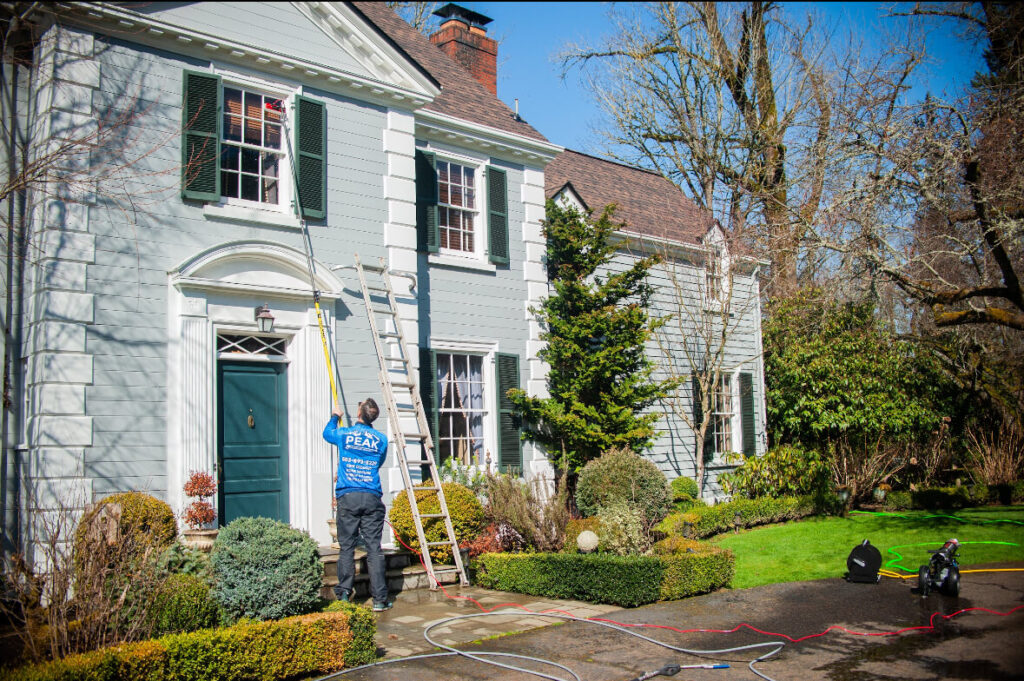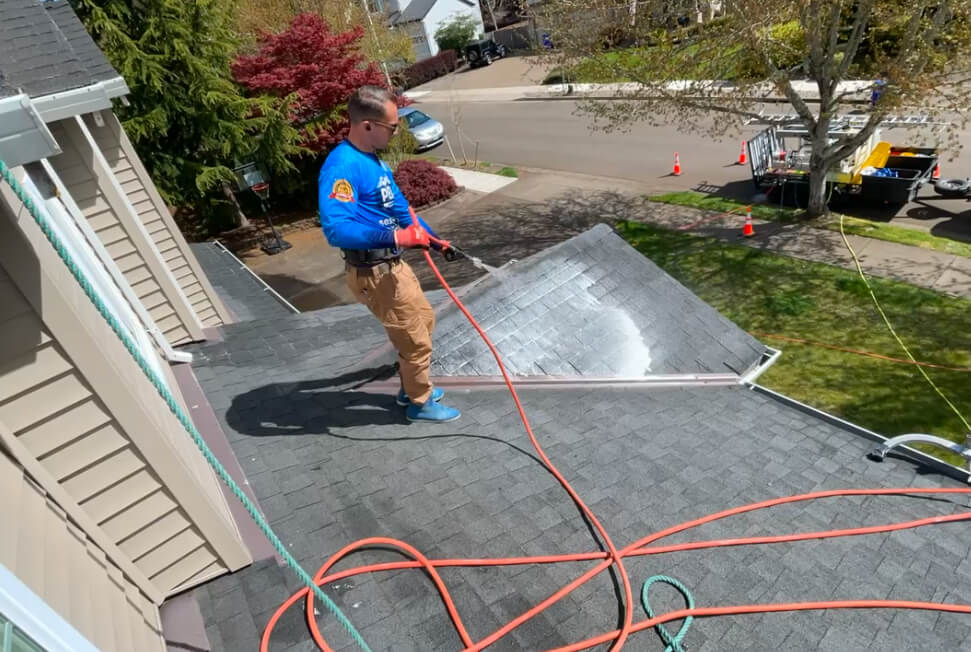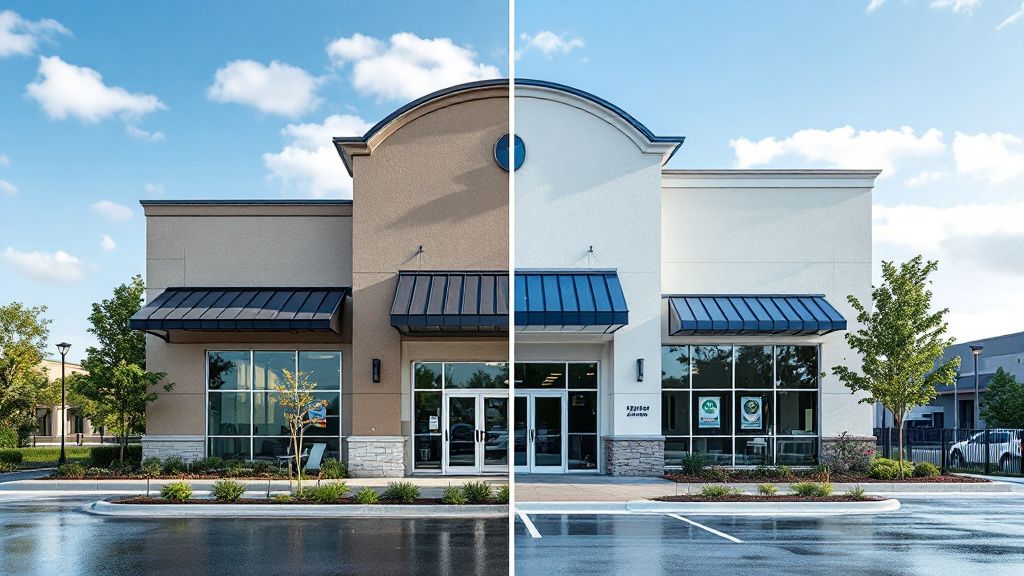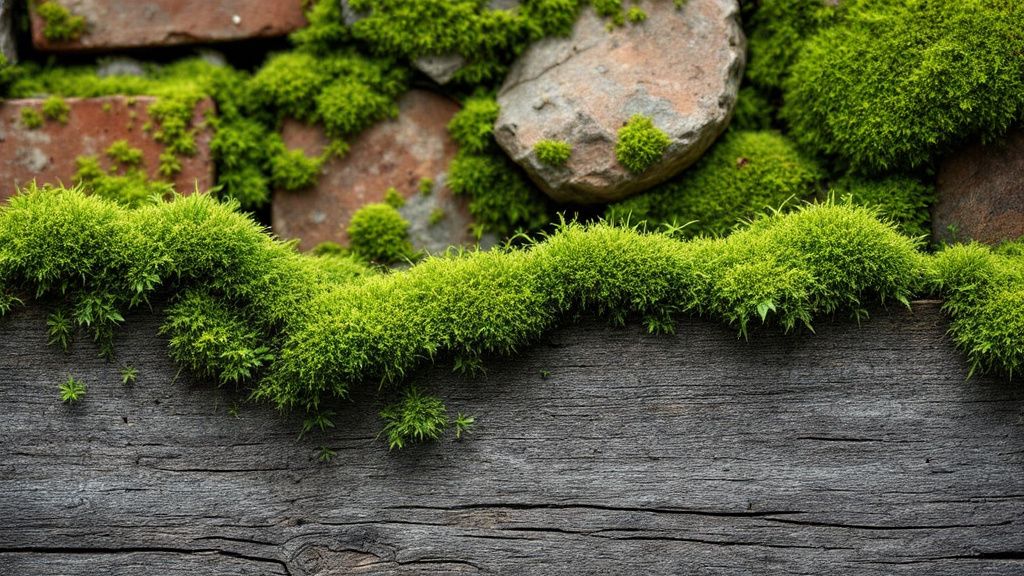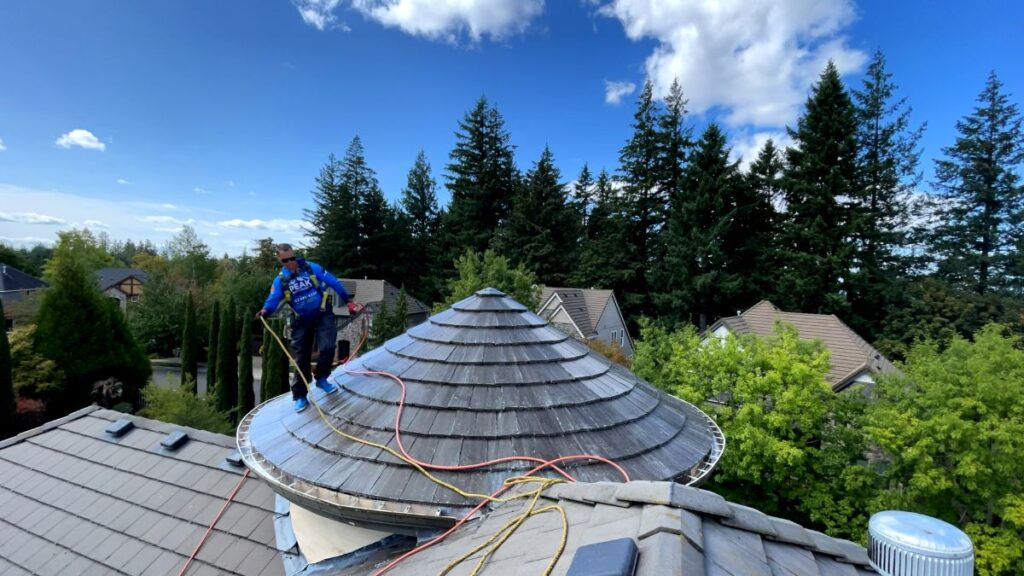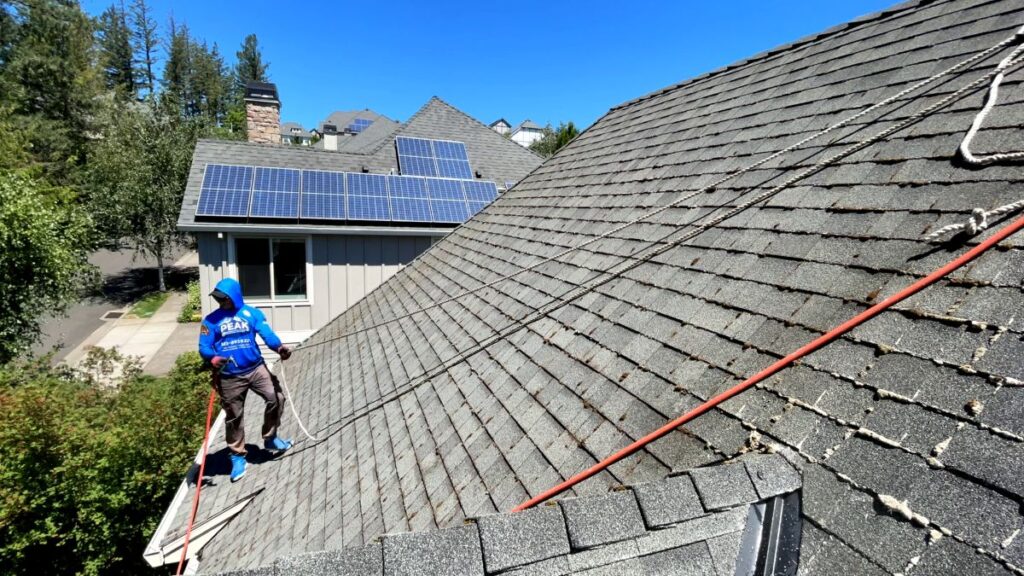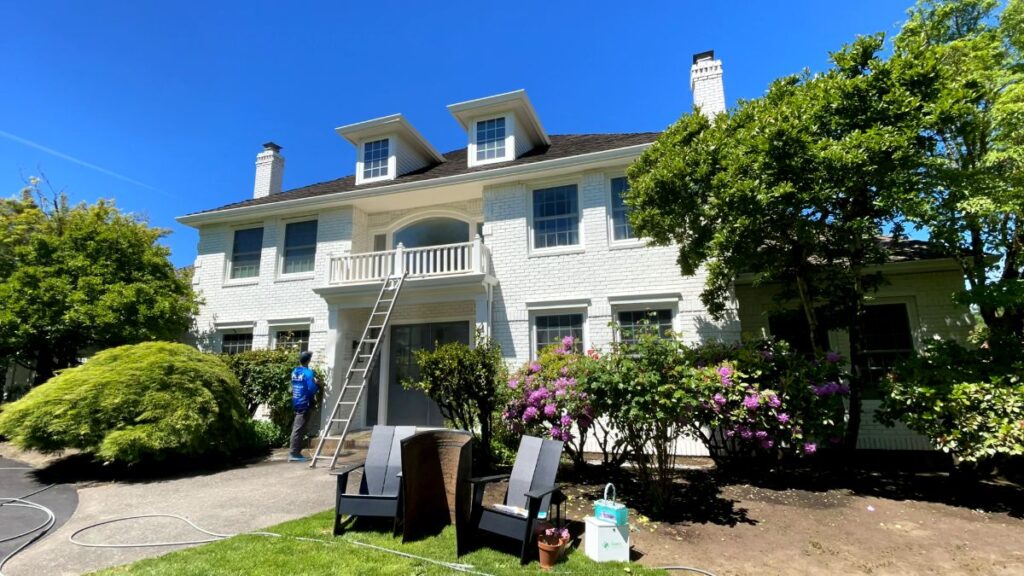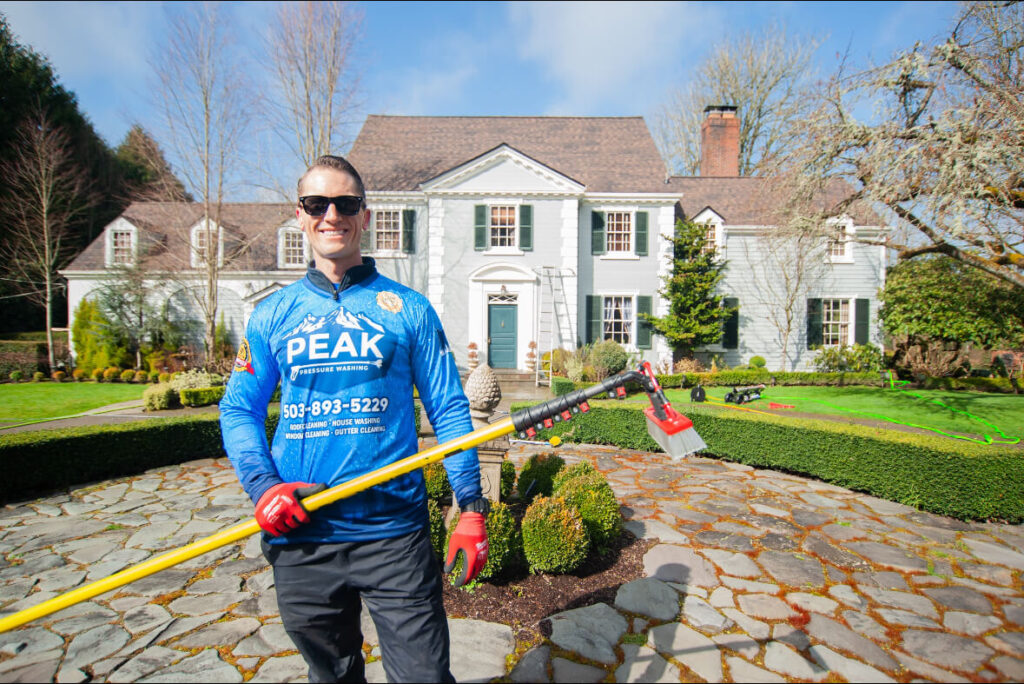Best Seasons for Roof Cleaning in the Pacific Northwest
Key Takeaways The Pacific Northwest’s lush greenery and temperate climate make it a beautiful place to live—but that same environment also creates the perfect storm for moss, algae, and roof debris. Understanding when to clean your roof is just as important as how you clean it. Proper timing not only ensures better results but also protects your home from long-term damage. Roof cleaning is often viewed as a maintenance afterthought, but in a climate where rainfall, humidity, and organic growth are year-round threats, planning your roof maintenance around the seasons makes a noticeable difference. Done right, it extends your roof’s lifespan, boosts curb appeal, and keeps energy costs in check. Let’s explore the seasonal considerations for roof cleaning in Oregon and Washington, why timing matters, and how professionals like Peak Pressure Washing make a difference. Why Roof Cleaning Timing Matters in the Pacific Northwest The region’s high humidity, consistent rainfall, and tree coverage create ideal conditions for organic buildup. If left unchecked, moss and algae can: Timing is everything. Cleaning your roof during drier months gives professionals the best chance to remove buildup thoroughly without interference from weather conditions. Moisture during or immediately after cleaning can reduce the effectiveness of treatments, leaving behind growth that quickly returns. A poorly timed cleaning can also increase risks. Slippery surfaces, hidden mold, or saturated roofing materials may make the job harder and less safe. Best Time of Year: Late Spring Through Early Fall The optimal window for roof cleaning in the Pacific Northwest is late spring through early fall. Here’s why: Scheduling in this time frame allows crews to do their work more thoroughly, without having to battle wet conditions, freezing temps, or stormy forecasts. Seasonal Cleaning Guide for Pacific Northwest Homes Each season presents its own set of challenges and opportunities. Here’s a quick breakdown: Creating a year-round care plan ensures your roof is always functioning at its best. Why Soft Washing Works Best in This Climate Due to the Pacific Northwest’s moisture-rich conditions, soft washing is the preferred roof cleaning method. It uses low pressure and biodegradable solutions to remove: This method is particularly important for asphalt shingles, clay tiles, and composite roofs common in the region. Unlike traditional high-pressure washing—which can strip granules, dislodge tiles, and void warranties—soft washing is gentle yet highly effective. Peak Pressure Washing specializes in this technique and customizes it depending on roof age, material, and condition. Our process protects your investment while delivering long-lasting results. Regional Roof Care Trends and Insights Homeowners across Oregon and Washington are becoming more proactive with roof maintenance. Some rising trends include: These practices align with increasing awareness about home performance, longevity, and environmental impact. Peak Pressure Washing stays ahead of the curve by offering environmentally friendly, results-driven service options to meet these evolving demands. The Long-Term Benefits of Timely Roof Cleaning Scheduling your roof cleaning at the right time each year can help: What starts as a simple routine task becomes one of the most valuable maintenance habits you can adopt. Homes that stick to a cleaning calendar experience fewer roof issues, retain higher property values, and save on long-term energy and repair costs. Frequently Asked Questions When is the best time for roof cleaning in the Pacific Northwest?Late spring to early fall offers the most favorable conditions—dry, mild, and moss-prone. How often should I clean my roof?At least once a year. Homes near trees or in shaded areas may benefit from twice-annual cleanings to stay ahead of moss. Can I clean my roof myself?DIY roof cleaning is risky due to slippery surfaces, potential for injury, and the chance of damaging materials. Hiring professionals ensures safety and long-term results. Is soft washing safe for all roof types?Yes. Soft washing is ideal for asphalt shingles, tile, and other common roof materials in the Pacific Northwest. Does roof cleaning really improve longevity?Absolutely. Removing organic growth and debris helps prevent decay, preserve structure, and extend roof life. It’s a small investment that pays off big. When it comes to maintaining your roof in the Pacific Northwest, timing is everything. A strategic seasonal approach, paired with the right methods, can prevent damage and maximize performance. Peak Pressure Washing delivers seasonal roof cleaning services tailored to your home’s needs—helping Oregon and Washington homeowners protect their investments, one roof at a time.

